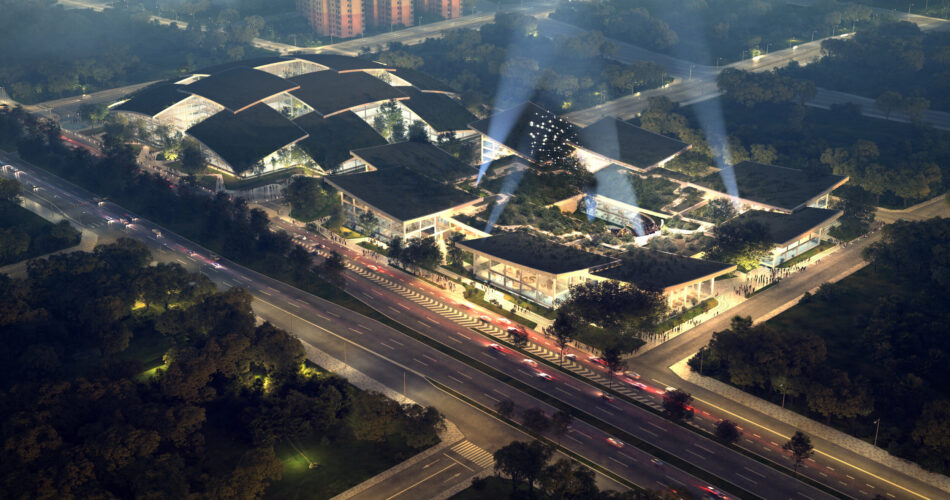A place where nature and technology coexist
In China, a new smart city project launched in April, promises to put artificial intelligence in charge, allowing everything from public transport to small facilities to run on its system. It’s called Cloud Valley, a city of about 13 million square feet, where technology allows people to live more comfortably by anticipating their needs.
Danish architecture firm BIG and Chinese tech company Terminus discussed plans to build a city like an AI-run campus style during an online panel at Web Summit.
The project plans to use sensors and wifi-connected devices to gather data on everything from people’s eating habits to pollution, explained Terminus founder Victor Ai.
Terminus Group advertises its project as being all about citizen comfort and efficiency: robots will supposedly deliver coffee, and office chairs will rearrange themselves after meetings.
“It’s almost coming back to this idea of living in a village where, when you show up, even though it’s the first time you’re there, the bartender knows your favorite drink”, said BIG’s founding partner Bjarke Ingels.
“As sunlight hits the houses, bedroom windows adjust their opacity to allow the natural light to wake sleepy residents”, Terminus said on its website, which also highlights peaceful green spaces like rooftop gardens.
“Once the light has filled the room, an AI virtual housekeeper named Titan selects your breakfast, matches your outfit with the weather, and presents a full schedule of your day”.
The city has spaces designed for all types of life: human life, plant life, animal life, and even artificial life including offices, homes, public spaces, and self-driving cars that move around under the ever-watchful eye of AI. The project is due for completion in about 3 years, according to Terminus.
In Cloud Valley, barriers between nature and buildings have been removed. Each courtyard is intended for specific public activities, and a technological park is spread between the buildings to host sports events, art exhibitions, and product fairs.

“When our environment becomes sensing and sentient… We can really open up that kind of seamlessness because the AI can recognize people coming. So it can open the door, so they don’t have to look for their key cards”.
The panels of the overhanging green roofs part to make the courtyards open-air, and at night their undersides will transform into a digital display.
Cities around the world are racing to embrace technology to improve urban life by collecting data to address problems like traffic jams and crime.
More than 500 smart cities are being built across China, according to the government, to spur growth amidst a global economic downturn.
However, Eva Blum-Dumontet, a senior researcher at the British advocacy group Privacy International, said smart cities risk undermining human rights if companies and governments do not ensure there is a limit on surveillance and a focus on inclusivity.
“We need to ask, for instance, how the city will affect people who may not be tech-literate”, she told the Thomson Reuters Foundation in emailed comments.
“This risk is all the greater when there is not a legal framework limiting the access that governments can obtain over the data collected by private companies”.
The future of the cities will surely be in the form of sustainability, not just through a greater closeness to nature and ecology but also with the help of technology. However, this for some can be comforting but for others, this may be something too intrusive. Too much control over our lives can be a problem. People need to feel free to do things without caring that their behavior may be used to inspect or condition their lives because we inevitably would fake everything (more than we do in our actual society) to get rid of a technology we have always looked for instead of being even more ourselves.

[…] are developing a smart city in China fully run by Artificial Intelligence (AI). Called Cloud Valley, the city – one of the 500 smart cities under development – covers over 13 million square […]